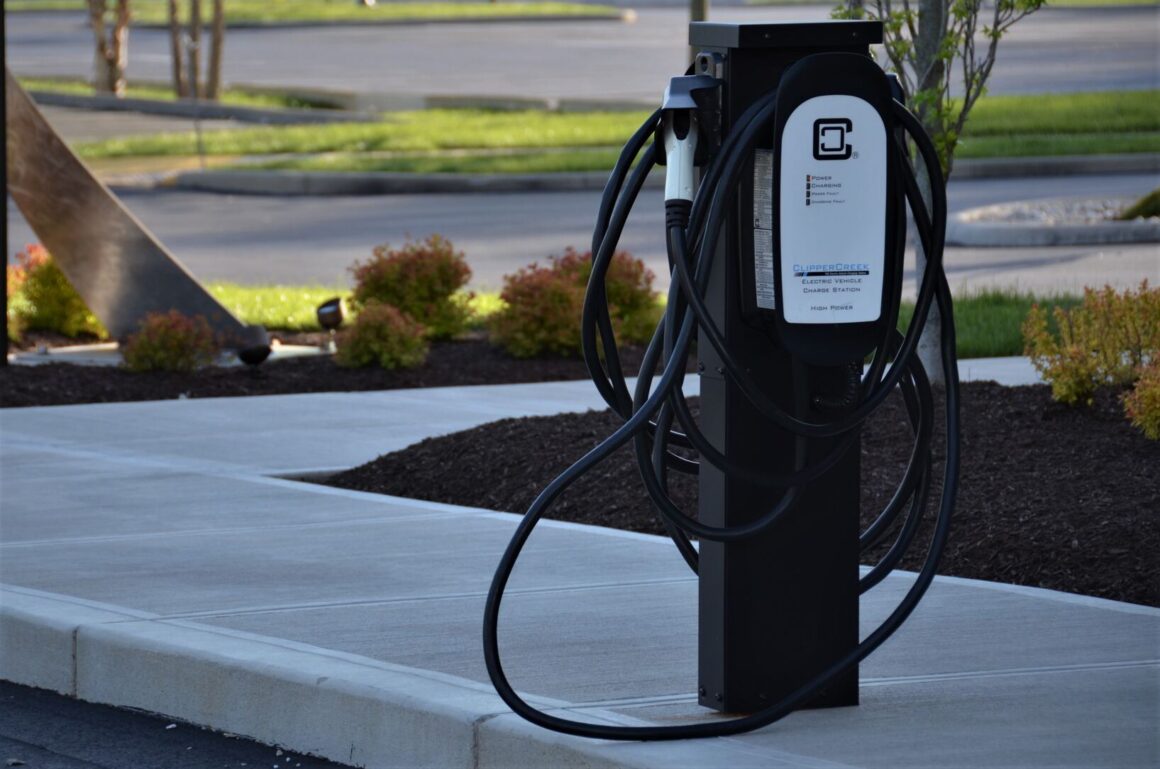Introduction
As electric vehicles (EVs) continue to gain popularity, the infrastructure that supports them also continues to evolve. One of the most significant advancements is the development of wireless charging pads for electric vehicles. This innovative solution provides not only convenience but also opens new possibilities for the future of electric vehicle charging.
Understanding Wireless EV Charging
Wireless charging for electric vehicles, also known as EV wireless power transfer, works based on the principles of inductive charging. This technology uses electromagnetic fields to transfer energy between two objects: a charging pad on the ground and a receiver on the vehicle. Unlike traditional wired charging systems, this method eliminates the need for plugging in and out, making the process seamless and efficient.
How Does Wireless EV Charging Work
Wireless charging for electric vehicles, also known as electric vehicle wireless power transfer or EVWPT, is a game-changing technology that is gaining traction in the EV market. While the concept might seem complex, it’s based on a well-understood principle called electromagnetic induction. So, let’s delve deeper into how wireless EV charging works.
The Principle of Electromagnetic Induction
Electromagnetic induction is the production of an electrical current across a conductor when it’s exposed to a varying magnetic field. This principle is the cornerstone of wireless charging technologies.
In the context of wireless EV charging, the setup generally involves two coils: a primary coil located in the charging pad on the ground, and a secondary coil fitted on the vehicle’s underside. When alternating current is passed through the primary coil, it creates a fluctuating magnetic field, which in turn induces a voltage across the secondary coil. This induced voltage is then used to charge the EV’s battery.
Components of Wireless EV Charging System
A wireless EV charging system typically includes the following main components:
- Charging Pad: This is the unit that sits on the ground, either embedded into the parking surface or positioned above ground. It contains the primary coil and connects to a power source.
- Vehicle Adapter: This is installed on the underside of the vehicle and contains the secondary coil. It’s designed to pick up power from the charging pad and transfer it to the car battery.
- Communication System: A vital part of the setup is the communication system. It enables the charging pad and vehicle adapter to interact, ensuring optimal alignment for charging and facilitating energy transfer.
- Power Control Unit: This component manages the power flow, regulating the charge to ensure the battery isn’t overcharged and ensuring energy is transferred efficiently and safely.
Inductive Charging vs. Resonant Inductive Coupling
While standard inductive charging has been around for a while, newer wireless charging systems often employ a variant known as resonant inductive coupling. In resonant inductive coupling, both the primary and secondary coils are connected to a capacitor. When the primary coil is energized, it resonates with its capacitor, creating a fluctuating magnetic field. This magnetic field can resonate with the secondary coil and its capacitor, inducing a higher efficiency power transfer over a greater distance compared to standard inductive charging.
Wireless charging technology is a promising development in the electric vehicle industry, offering convenience, reduced wear and tear on physical connectors, and the potential for automated charging. Understanding how wireless EV charging works helps us appreciate the science and engineering that goes into this next generation of EV infrastructure.
The Efficiency and Advantages of Wireless EV Charging
In the debate of wireless vs wired EV charging, the former brings several advantages to the table. First, it offers a high level of convenience as drivers can simply park their vehicles on top of the charging pad and let the technology do its work. This advantage can be particularly beneficial in public parking spaces and home garages.
Furthermore, wireless charging pads for EVs are designed to withstand harsh environmental conditions, making them a reliable and sustainable charging solution for EVs. While the efficiency of wireless EV charging currently lags slightly behind wired methods, improvements in resonant inductive coupling and other technologies are closing the gap.
The Cost and Installation of Wireless EV Charging Pads
As with any new technology, the cost of wireless EV charging pads can be higher than traditional wired systems. However, as the technology continues to evolve and become more mainstream, prices are likely to fall. Installation of a wireless charging pad for EVs can vary based on factors like the brand and type of vehicle, but typically involves setting up the pad in a garage or driveway and installing a receiver on the vehicle.
5 Top Wireless Charging Pads for Electric Vehicles
As the future of electric vehicle charging evolves, several manufacturers are leading the pack with high-quality wireless charging pads for electric vehicles. Here are our top 5 picks based on their performance, convenience, and user ratings.
- WiTricity’s Halo: WiTricity is known for its pioneering work in resonant inductive coupling, and the Halo charging pad exemplifies this.
- Pros:
- High efficiency, boasting an energy transfer rate that rivals corded methods.
- Convenient, hassle-free charging, just park your vehicle and let it charge.
- Compatibility with various EV models.
- Cons:
- The high-end technology comes with a high-end price tag.
- Requires professional installation.
- Pros:
- Plugless Power: Evatran Group’s Plugless Power was the first wireless charging system on the market and remains a top contender.
- Pros:
- Robust and durable construction.
- Supports a variety of EV models.
- Automatic alignment system ensures efficient charging.
- Cons:
- Lower efficiency than some competitors.
- Some users have noted a lengthy installation process.
- Pros:
- Bosch’s Inductive Charging System: Bosch’s entry into the market is noted for its combination of functionality and user-friendly design.
- Pros:
- Excellent build quality and durability.
- Easy to use and install.
- Reliable charging performance.
- Cons:
- Limited compatibility with EV models.
- The charging rate is slightly lower compared to other systems.
- Pros:
- Hevo Power: Hevo Power’s wireless charging pad distinguishes itself with a focus on seamless integration into urban environments.
- Pros:
- Unobtrusive design allows it to blend into various surroundings.
- Uses advanced resonance technology for efficient power transfer.
- App integration for easy control and monitoring.
- Cons:
- Still limited in availability.
- Installation can be more complex due to its unique design.
- Pros:
- Qualcomm Halo: Qualcomm is a well-known name in the tech industry, and its Halo wireless charging system has made a strong impression.
- Pros:
- High charging efficiency with advanced WEVC technology.
- Multiple safety features to protect your vehicle and charger.
- Wide compatibility range with various EV models.
- Cons:
- Higher price point than some competitors.
- Requires professional installation.
- Pros:
While each of these wireless charging pads for electric vehicles has its pros and cons, they all represent significant advancements in EV technology. The best one for you depends on your specific needs, including your budget, the type of EV you have, and your charging preferences. Stay ahead of the curve and invest in the future of electric vehicle charging solutions with one of these remarkable wireless systems.
The Future of Electric Vehicle Infrastructure
As the rise of electric vehicles continues, one of the most significant challenges that we must address is the development of a robust, flexible, and sustainable electric vehicle (EV) infrastructure. This expanding EV infrastructure includes not only the charging stations we typically think of, but also encompasses the grid capacity, technology, and regulations necessary to support this new era of transport. Let’s dive deeper into the future of electric vehicle infrastructure.
Emergence of Wireless Charging Stations
The advent of wireless charging pads for EVs has disrupted traditional charging methods. As we’ve already discussed, these systems use resonant inductive coupling or other types of electromagnetic fields to transfer energy from a pad on the ground to a receiver on the car. The convenience factor here is enormous, removing the need for cords and plugs, and making the charging process as simple as parking your vehicle.
This innovation also opens up new possibilities for the integration of charging infrastructure into our urban and residential environments. Imagine public parking spaces, home garages, or even streets equipped with embedded charging pads, providing continuous top-up power to our EVs. Companies like WiTricity, Hevo Power, and Plugless Power are already pioneering these efforts.
Enhanced Grid Capacity and Management
The increased demand for electric power to fuel EVs presents an opportunity for upgrading and optimizing our power grids. Smart grids will become more critical as they allow for real-time management of energy demand, preventing overloads, and enabling the most efficient use of renewable energy sources.
Moreover, Vehicle-to-Grid (V2G) technologies, which allow EVs not just to draw power from the grid but also feed it back during peak demand times, are set to become more mainstream. This shift effectively transforms EVs into mobile power storage units and contributes to more stable, balanced power grids.
Advances in Battery Technology
Future EV infrastructure will also be heavily influenced by advancements in battery technology. Faster charging batteries, batteries with higher energy density, and solid-state batteries could all significantly improve the EV charging experience and increase the adoption of electric vehicles.
Policy and Regulations
With the rapid advancement in EV infrastructure, updated and new policy regulations will play a crucial role in shaping the future. Regulations around standardization of charging equipment, safety protocols for wireless charging, incentivizing installation of charging stations in public and private properties, and renewable energy integration into the grid are just a few areas where policymaking will be influential.
The future of electric vehicle infrastructure is not just about having more charging stations. It’s about smart, efficient, and seamless integration of EVs into our power systems and our daily lives. It’s about using technology, policy, and innovation to create a sustainable transport future. And with the pace of progress we’re currently seeing, that future seems to be arriving sooner than we might think.
Conclusion
As we journey into the future, the adoption of electric vehicles continues to skyrocket, driven by our collective desire for a more sustainable mode of transportation. Wireless charging technology, an essential part of this progression, is already showing its potential to revolutionize the EV industry, promising a future where charging an electric car is as simple as parking it.
From understanding the ins and outs of wireless EV charging, exploring the top wireless charging pads on the market, to envisioning the future of electric vehicle infrastructure, we hope this guide has provided you with valuable insights and heightened your excitement for what’s to come.
Whether you’re an EV owner, an enthusiast, or simply curious about the world of electric vehicles, it’s clear that we’re at the brink of a new era. An era that embraces technology and innovation, transforming not just our vehicles but the very infrastructure that supports them.
But now, we’d love to hear from you. What do you think about wireless charging technology for electric vehicles? Are you considering installing a wireless charging pad for your EV? How do you envision the future of electric vehicle infrastructure?
Leave your thoughts, questions, and insights in the comments section below. Join the conversation and let’s shape the future of electric vehicles together. Remember, your voice matters, and it might just spark the next big idea in the electric vehicle revolution.
Stay tuned to our blog for more updates and deep dives into the exciting world of EVs. Thank you for reading, and until next time, happy charging!









